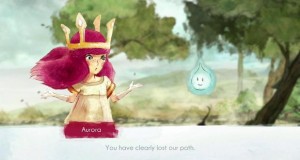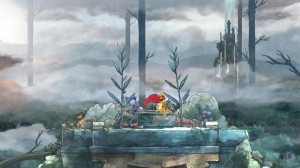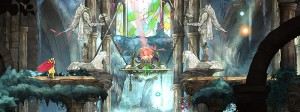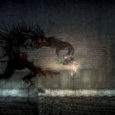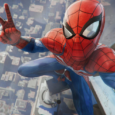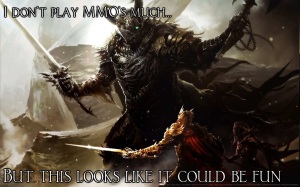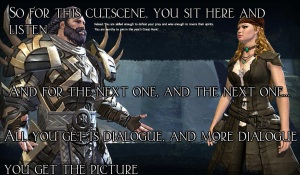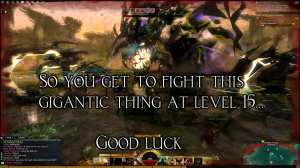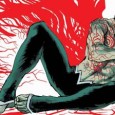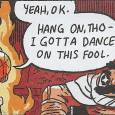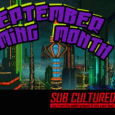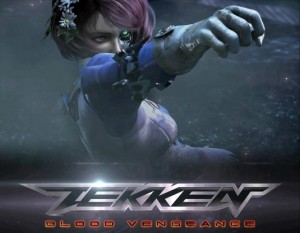Have you ever had a visual that nagged at the corners of your mind with its unidentifiable familiarity? Something you know is an undercurrent to common things you touch every day? One of them is probably happening when you turn on your phone’s Bluetooth.
The icon you are seeing without considering is actually a double rune called a bind-rune. It is formed from two runes that are merged together. Ericsson, the Denmark based company that created Bluetooth, has a Viking heritage which explains the use of Norse history.
Bluetooth uses radio waves instead of wires or cables to unite two separate devices. Harald Bluetooth united Denmark in the late nine hundreds and as such the device is named after him in rune form. You can see the H and B runes for his initial are joined to represent this idea.
To truly appreciate this, should understand what runes are. There is a lot of mystery if they are ancient Norse letters that, according to mythology, Odin discovered and gave to gods and humans, if they are divinatory symbols, or something else entirely. Runes have been around for thousands of years and their symbols are still used as psychic tools today.
What does this have to do with video games? Not surprisingly, runes are a type of universal language in video games as well. When you need a symbol to represent a magical power or indicate an instruction that supersedes language limitations of the users, runes allow for game design in visual form. You might find this familiar since you have seen this before. Do you recall the runic alphabet, in the Ultima games, Runescape, Dishonored, or perhaps you noticed them when you cast spells in The Elder Scrolls: Skyrim. However, those six Elder Scrolls runes are inspired by the Nordic alphabet but not truly reflective of it. Camelot Unchained uses runes as well in combinations during spell creation. As you can see video games often borrow from history and mysticism when the setting is right. Hopefully you can appreciate that something so ancient is still affecting both our digital and our physical world today.
Sit down for an honest review, spoiler-free
for a game full of wonder, sorrow, and fun
Child of Light’s great to play, a few things it missed,
but is overall solid, whimsical, a game that does stun.
Within the past month Ubisoft Montreal brought us a beautiful surprise in the form of a side-scroller meets RPG, Child of Light. Built on the same engine from Ubisoft’s Rayman series, Child of Light is less Rayman, and more director Patrick Plourde and writer Jeffrey Yohalem’s homage to fairytales, classic fairytale illustration, fantasy films and Japanese RPGs such as Final Fantasy.
Even Yoshitaka Amano, the artist who produces both concept art, costume design and logo art for the Final Fantasy series contributed either conceptual or promotional art for Child of Light.
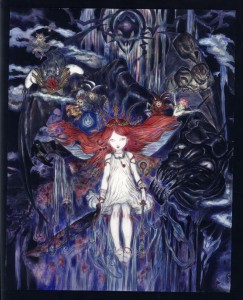
You can see the I believe “extra” party character from the downloadable quest add-on, on the top right.
A short game, with a somewhat fresh or “indie” feel, it’s a certain departure from grittier or more sophisticated work Ubisoft normally puts out. Smaller, more intimate. Artisan.
Child of Light is centered around a young girl from 1895 Austria, the aptly named (and pink haired!) Aurora. Aurora, the daughter of a Duke, contracts an illness that sends her into a death-like sleep, or rather actually…uh, dies? She however awakes upon an altar in a ruined fantasy land, Lemuria, caught underneath the grip of an evil Dark Queen who hid away the sun, moon and the stars. Aurora, gifted a sword and aided by the (on PC) mouse controlled Igniculus, a “firefly” (more like a will-o’- the-wisp in function, whose design vaguely resembles Slime from Dragon Quest) must set out and reclaim said celestial bodies to bring peace back to Lemuria. Aurora too seeks to return back to her father, who himself is ailing following Aurora’s apparent “death”. Along the way Aurora befriends comrades to the cause, effectively expanding her party.
THE GOOD:
First, let me say I am not a good gamer. I am really terrible at videogames. Which is why you never see me over here writing for you in this department often, if at all. I don’t think I have yet! I tend to like artsy, heartfelt games that are on the simpler side in execution. Team ICO holds my heart. But, Ubisoft’s desire to create an “interactive painting, a playable poem” and this game’s fairytale allure made me want to try this game. As a deficient gamer, I was lucky, as this game has two settings, more or less “easy” and “hard” modes called “casual” and “expert” respectively, and it was difficult enough for me on “casual” mode. Which is fine. Because I like to play my games well, more leisurely and I still ran into some boss battles and even just situational battles that were less than smooth. But I liked it that way. So, if you’re not a great gamer and want something fun but not too difficult, this game is definitely for you. In fact I think it would be a great introduction to RPG’s for sophisticated kids and tweens and teens. Or really anyone.
This game is a bit unique in that while the lead is a very feminine looking little girl with pink hair, gifted (eventually) fairy wings, and wields light, her main weapon is a big sword. She is the hero. She is not limited by the game makers to traditionally “girly” attacks or themes despite her hyper-feminine appearance and wearing a nightgown/dress. There is additionally no prince for Aurora to fall in love with. No romance. None. Aurora is a great main character, I loved her a lot. Certainly great for kids to see; we need more main characters like her! Actually all the characters have interesting personalities and elements to their individual stories that are good for growth and learning how to cope with things. What we saw of them, I enjoyed them all.
Another highlight, the music composed by the young (twenty-four year old) but terribly talented musician Cœur de pirate (Béatrice Martin) is inspiring and really provides a great atmosphere with the illustration-like visuals. If they ever release an OST I’d snap it up in a second.
Visually the game is stunning. It is an interactive painting. Incredibly difficult to choose where to screenshot that others haven’t already done. Gorgeous, non-objectified character designs for female characters. Everything, from backgrounds to enemies is either hand drawn watercolor or rendered in gorgeous illustration or stained-glass CGI with lots of bloom and shading. Gorgeously animated. The effect is something similar or reminiscent to Okami (with a more western storybook feel instead of sumi-e, the inspiration for the game coming from John Bauer and other “Golden Age of Illustration” illustrators like Arthur Rackham) and due to the side-scrolling nature of the game, at least a little bit; shades of Paper Mario-like interface.
Some glitches on my PC version through Steam were however, noticeable, mostly Aurora’s very animated hair, would disappear in certain battles effectively giving her a Mia Farrow pixie cut. But that didn’t really bug me too much. I thought the storyline was good, definitely not mold breaking by any means, but overall, solid. Not perfect. But “enough”.
The game overall reminds me of the 2D Aquaria, an indie game from a few (woah actually seven!) years back that was very ambitious with it’s paper-y doll illustrated look and I think still holds up strong as a great game today.
THE BAD:
The faults in Child of Light, while a solid game with it’s own charm, comes mostly from some underwriting when it came to the main plot, some telling vs. showing, and while overall solid, a limited battle system.
I felt story-wise the writing got a little thin at times; I felt I had missed some much needed back-story regarding some characters and was confused at some characters popping up out of nowhere but proving important to the plot. There are also story points and elements going on that we never get a full explanation about why it’s happening (but sound interesting) or further explore. This somewhat lack of roundness particularly for three characters including the big bad and the disjointed pacing that entailed made the game sometimes feel abrupt or again, that I had missed something. I felt the end also fizzled out or felt a bit rushed, jumping from one boss to the final boss without any break or gameplay in between, not even to adjust your assigned occuli to weapons and defense. The final battle was also visually underwhelming compared to what I was imagining or compared to bosses I had gone up against earlier in the game. To be fair, they have confirmed they cut a level leading up to the final boss, but it was simply game play.
Being said I would have also liked more cut scenes and or plot integration with my party. FFX always comes to mind as an RPG that did party interaction and plot specificity rather right. Okami was never terribly difficult and often repetitive but the sheer number of characters, personalities and side quests with high degrees of interactivity with said characters made the game feel so rich. A bit more of that kind of “oomf” and integration would have really made the game.
Some NPC’s in Child of Light even after you’ve helped them, continue their dialogue as if they were still looking for the object that you delivered and now hold in their hand. Small glitches like that take you out of the game. I additionally thought one party member was a bit redundant despite some great spells, and it would have been fun or different had they “joined” an existing member in your party as a duo thus changing up the roster and the stereotypical RPG format instead of taking up another solo spot.
Additionally, while gameplay was fun; you more or less have most of your character’s attacks already; you gain a few new abilities but in general you have the set attacks already. You can acquire new “passive” attacks or increases in your status that assist in battle but with existing attacks all you can do is advance them to apply to multiple individuals and or increase in damage. This is a bit of a downer as one of the cooler parts of RPGs is unlocking and learning new abilities and seeing them being cast/performed for the first time, especially in a time of need. It also encourages you to cycle through your party more as characters get stronger and more useful as they “grow” into their respective roles and offer even more unique attacks.
Given the small development team and short playing time of the game however, I know this is asking for a lot. I understand the limitations. What we did get is still a blast and at it’s core still a good narrative and very playable.
I feel a lot of these issues in Child of Light could be remedied by additional downloadable narrative quests down the line. There is already a downloadable quest with a new party member available who I believe was meant to be there the entire time. If they keep adding additional content, I think it would help the game be even greater than it managed to be; which is still rather great.
I really do recommend this game; there is an official tumblr for it to learn more about it and how they made it. The staff were nothing but enthusiastic and so invested in the game; really check it out and support their hard work.
For the super affordable price at $15, I’d award Child of Light an 8/10.
In all, the game is magical, gorgeous and scary
get it, play it, and let me know with a shout
of what you thought, your feelings,
for Child of Light; do you laud or flout?!
See you real soon!
Max Eber
max@sub-cultured.com
Twitter: @maxlikescomics
It seems that no matter what MMORPG pops up to challenge the juggernaut of Blizzard’s World of Warcraft, it’s never good enough to come out on top. Rift and Final Fantasy XI both have plenty of players and I’m sure they are fun to play, but it seems Blizzard has staying power. With the new Mists of Pandaria expansion, World of Warcraft continues to offer updated content and new experiences to keep players around. Guild Wars 2 was released recently amidst a large amount of buzz, both from its root fanbase and newcomers alike. I picked up the MMORPG on impulse, hoping for a change from the “not-quite-as-good-as-WoW” titles we’ve all seen as of late. What follows is my experience with the first 20 levels of Guild Wars 2.
To start, I’m not much of a fan of MMORPGs. I played WoW for a while when I was younger, but quickly moved on. I have tried many times to play different MMOs and nothing has really been able to keep me coming back and playing, either through end-game content or other characters. Heck, most of the time, I never even finish my first. However, Guild Wars 2 offers a lot of variety and different mechanics to keep me interested. For my first character, I chose to play with the Norn race and the Engineer class. The first thing I noticed was how big the character model was. In game, I look like a giant compared to the humans, and it felt like I ran a little bit slower than the smaller characters as well. This aesthetic makes you feel out what kind of character you are, and is a trait some games tend to gloss over. Though it’s small, it’s just another thing to pull you into your character’s world.
As an engineer, I mostly use pistols and rifles, empowering my shots with various effects and gaining the ability to place turrets or drink elixirs. Aside from the obvious idea behind the design of the classes and archetypes behind them, I could really take my character in a number of different directions depending on the skills I chose and style of play I preferred. Choosing a class never pigeon-holed me into playing as what the developers though an Engineer should be. I felt far more free to customize my character’s skills and abilities than I have in most other MMOs.
Each race has an interesting backstory, but so far most of the “important” story missions include some cutscene where my character sits there and talks with someone else. I do a few tasks, and the story is advanced by me doing almost nothing and listening to dialogue. This experience tends to get tiring, but it’s the norm in games like this, so it says less about GW2 and more about the MMO genre in general. At the moment, the most interesting part of my experience lies somewhere between the missions in the story.
Once I began my epic quest, the game more or less dropped me in the starting area with only a minimal tutorial on how to move about and play the game. While I appreciated the effort on the developer’s part to respect the player’s intelligence, there were a lot of complex actions happening around me and at first I felt clueless. Thankfully, the game does offer the a sort of tutorial, it just takes a certain amount of investigation. For most of the UI and its options are explained in small hint bubbles. However, in order to learn how to really play the game, I had to interact with the NPCs in the starting area. A lot of the NPCs in the first area are there to teach new players how to do each specific task, and it helps a lot to make a new player learn by experimentation. I could have just wandered off and figured everything out eventually, but discovering the usefulness of NPCs made the learning curve not as steep as I thought it would be, though it’s still a bit overwhelming. Even with the help of an NPC here or there, the amount of information thrown at a new player early on is substantially high. Thankfully they don’t throw it all at you at once, making the workload more manageable and less frustrating. Crafting and Advanced Training are two important aspects to pay attention to later, but until you pass the level 20 mark, these two mechanics are largely unimportant in my opinion. You can craft items and gain more stats through both Crafting and Training. However, at lower levels, it isn’t worth investing in as the more advanced items and skills are gained at higher levels.
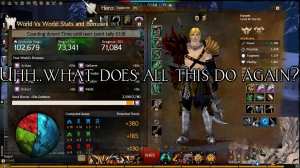 One of the unique aspects about GW2 is how skills are leveled up within your character’s class. Primarily, your character has certain skills which level up as you use specific weapons. My Engineer uses pistols mainly, and the more I use those pistols the more skills and abilities I acquire to deal more damage. Once you unlock additional skill slots, the numbers 6-0 on a keyboard, skills are unlocked using skill points. Instead of getting certain skills at specific levels or only adding more power to skills you already have, skill points are earned and used to unlock skills over time. This mechanic, though not a new one in the genre, is appreciated as it lets the player choose which abilities he or she wants and allows for customization of a character to fit a specific playstyle. Generally skill points are earned through leveling, but there are also skill challenges throughout the areas you visit which can give you additional skill points to spend as you wish.
One of the unique aspects about GW2 is how skills are leveled up within your character’s class. Primarily, your character has certain skills which level up as you use specific weapons. My Engineer uses pistols mainly, and the more I use those pistols the more skills and abilities I acquire to deal more damage. Once you unlock additional skill slots, the numbers 6-0 on a keyboard, skills are unlocked using skill points. Instead of getting certain skills at specific levels or only adding more power to skills you already have, skill points are earned and used to unlock skills over time. This mechanic, though not a new one in the genre, is appreciated as it lets the player choose which abilities he or she wants and allows for customization of a character to fit a specific playstyle. Generally skill points are earned through leveling, but there are also skill challenges throughout the areas you visit which can give you additional skill points to spend as you wish.
Leveling is also a little different than you would expect. While your character has a main quest, the side quests are mostly separated by the area you are in and there are only a few important quests that give you large amounts of experience. A lot of the XP comes from exploring the map, discovering important places, or finding parts of an area. While fighting and killing monsters along the way nets some XP, it is more efficient to complete the side quests, usually marked by a heart on the mini-map. These quests usually require you to do some combination of actions in an area to help out an NPC, as we’ve all learned to do since Monkey Island. I really appreciate how the game lets you interact with the world in different ways, depending on what you want to do. You are rewarded with XP for exploring the game’s gorgeous environments, or interacting with NPCs and helping them with various tasks. Or you can take the road less traveled and conquer any manner of beast willing to challenge you during your daring exploits. This diversity goes quite a long way in alleviating the tedium and monotony of grinding.
My favorite element of Guild Wars 2 is the random zone events. If there is anything that will keep you playing this game, it’s going to be these. Anything from stopping stampeding bears to taking on an ice dragon across frozen tundra can happen when running through an area. I had only made it to level 10, exploring the frozen mountains of the Wayfarer Foothills when I came across an event where I helped take down an evil shaman who was opening gates from another dimension. The fight felt like an end-boss fight, with at least 10-15 other players helping take on this guy, and all of us dying at least once. MMORPG 101: once you reach your maximum level, end-game content turns into you and your friends taking on bosses you couldn’t possibly take on your own. I was having that kind of high level experience, having only just broken double digits. These events would happen with or without me present, which I felt greatly enhanced the experience. I had the choice of helping these people out or walking on my merry way. There was nothing keeping me there, nor keeping me out and it was refreshing. The event itself was quite fun and the thought of being able to do this multiple times in an hour or so is intriguing to say the least. Even though these events are the most exciting part of Guild Wars 2, there’s no game a few friends can’t make better.

Multiplayer in GW2 is an interesting mix of friendly adventures and beating each other’s face in with dragons and guns. I had a few friends accompany me through my first hour or two of playthrough, and it certainly helped in understanding how certain things worked. The best part is they were almost the same level as me, even if they really weren’t.
Let me explain.
Instead of just having a level 20 guy in a level 5 area, smashing all the monsters and stealing XP from lower level players, GW2 scales down higher level players in lower level areas. My level 18 friend was called down to level 5 when helping me on my first few events, and it was nice being able to feel like I contributed a little. Though I had never specifically identified this as a problem in other games, it now sticks out like a sore thumb. If I wasn’t playing the same amount as my friends, either they or I would become more powerful and the game would devolve into a mindless spam-fest. With this mechanic, we can play as much as we like and the battles focus less on stats, and more on skill.
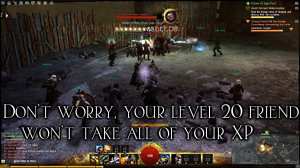
I then decided to try PvP and had a great time getting my face pounded into the ground. In Guild Wars 2 there are two types of PvP “arenas” you can participate in. The first is a structured PvP, where you are given a template of your character’s race and class, with every ability and stat point unlocked. Instead of being jumped by some end-game level player and getting your stuff robbed, the game puts you and your opponent on a somewhat even playing field, with the same skill points and skill choices. Of course player skill and personal items do carry over, so it isn’t exactly even, but the game at least attempts to give you a chance at not dying. World vs. World is about what it sounds like: you take your character as is and battle against players from a different server. World vs. World feels like it is meant for higher level characters, where you battle with your friends and take on a horde of other players from a different server. I haven’t really been able to play it yet, but I plan to try it out very soon.

There are many aspects of Guild Wars 2 that I haven’t yet thoroughly explored. I haven’t even really tried to learn how to craft items or play PvP in any thorough manner and my level has only just barely broken out of the teens; however, I think this game will keep me coming back for more. Once you make the initial $60 purchase of the game, the online play is free and worth coming back to. Based on my experience, Guild Wars 2 is an interesting MMO, and absolutely worth buying. Even if you don’t like MMOs that much, GW2 is a game worth exploring with a few friends. And if you’re a seasoned MMO vet, you’ll find the changes to the game refreshing and interesting. I know, I know, Guild Wars wasn’t the best, but give its older, much handsomer brother a try. While I may have only scratched the surface in regards to all that GW2 has to offer, I will keep playing, leveling up, fighting monsters, and sharing my experiences as I go along.
My new years resolution was to play fewer video games.
I realized this wouldn’t be impossible unless I simply loaned out my game consoles. So I did. I got a lot done. And now I got my stuff back because the holiday bum rush of triple-A games are upon us and I couldn’t resist. My gold membership has expired since that time obviously so I am just playing single player games at the moment.
I recently got done playing Assassins Creed Brotherhood, followed by Batman Arkham City, and finally a little Gears of War 3. There was a constant theme I noticed throughout the games that has been coursing through games the past few years, so to most of you this won’t be any great revelation.
1) Since when did every hero, assassin, adventurer, etc learn parkour.
If you aren’t familiar with parkour go ahead and watch this video (or any other one) and catch yourself up a little.
Please enter the url to a YouTube video.Seriously. I know parkour blew up a few years ago in the states and then what? Game developers saw it and said, “Well since everything else in our game is complete fantasy and entirely impossible, we should at least make them move realistically. I mean come on… the fans will absolutely tear us to pieces if we don’t give our billionaire superheros and ancestral-dna-time-travelers parkour to ground them in reality“???
Prototype, Infamous, Prince of Persia, Uncharted, Red Dead Redemption, Saints Row, Just Cause, Assassins Creed (1,2, Brotherhood, Revelations, and 3), Mirrors Edge, Crackdown, and even upcoming games like Resident Evil 6 and Prey 2. I swear if the next Mario game trades in the Tanooki suit for parkour I will be done. Just done.
2) When did the game industry decide ripping off Hans Zimmer and John Williams was the way to go with soundtracks now?
Remember when you could hum your favorite video game tunes. Try humming a new triple A title. Unless you can hum with the might of the Transatlantic Orchestra you are probably out of luck. And I can’t even say that all games rip off Hans Zimmer. Some games like Crysis 2 are actually composed by Hans Zimmer.

I get it. I think… Our games need to have the same dramatic tension in them as movies.
WE ARE DEFINITELY ON THE CUSP OF GAMES BEING SEEN AS LEGITIMATE ART. Definitely…..
….As we beat people with dildo bats.
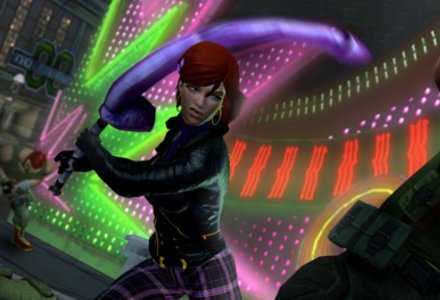
Split people in half with samurai swords

Teabag each other in Halo
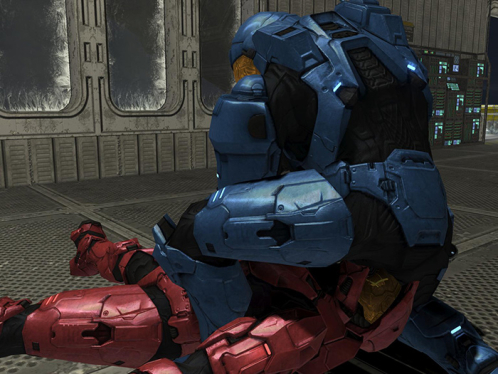
And score bonus points for shooting up an anus

Step aside F. Scott Fitzgerald. Video games are here to show you real art.
Look, I’m not saying games shouldn’t have dramatic music ever, but what I am saying is that it shouldn’t be the standard. Use it when necessary, which is not all the time. Taking a crappy melody and playing it with a violin doesn’t make it good. It just makes it a crappy melody on a grand scale.
3) TAKE COVER!! TAKE COVER!! TAKE COVER!!
Look. When Gears of War hit the scene it changed the game. Even though the change was the most obvious thing in the world. Should I stand in front of my opponent as we both unload a machine gun into each other or take cover. Duh. Now… Time Crisis did the cover system wayyyyyyyy before Gears of War, but Time Crisis was also an on rails shooter. To some degree Metal Gear Solid and Killswitch helped push the cover system even farther, but not until Gears of War came out did every game and it’s dog decide it too wanted a highly polished cover system.
Problem being, most games that aren’t Gears of War have a polished terd cover system. Most of these cover systems are terrible. And on top of that, cover systems are kind of a broken mechanic in third person, giving advantage to those behind cover by letting them see around corners without actually exposing their characters and penalizing mobile characters. I would list a game with a cover system, but hell, you are probably playing one right now. Developers just stop… please? And use the money you saved on a sub par cover system and design something that will really separate your game from the flock and make it memorable. Innovate a little, ya know?
As much as I liked the Mass Effect series, it’s cover system was a steaming pile of poop. For all the novelty of the games they couldn’t come up with something more interesting? Batman Arkham Asylum/City found a way to incorporate it in its stealth segments without it being needed for the majority of combat. Comparing apples and oranges I know, but still, I really feel the cover system is becoming a crutch and a cash in to certain games.
Some games do it right I feel, like Uncharted 2 and 3 and the above mentioned Batman. It might not be the most inspired cover system, but it fit with the game and didn’t take away from it.
When all is said and done, it feels like I am playing the same hero over and over again in these games, just re-skinned. I’d love some new game heroes =/
RANT MODE: DEACTIVATE.
The time has come to prove your skills and get your name out there! Are you looking to get into the gaming scene? Here are some upcoming tournaments to show us what you’re made of! Even if you don’t compete, come out and support the gamers, and get to know the gaming community. (more…)
Tekken: Blood Vengeance is right around the corner!!!! Its theatrical debut is scheduled for July 26,2011 in North America. Although I will not be at the premiere in L.A. where one gets the chance to play Tekken Tag 2 (grr), I will be attending a local showing! (more…)










